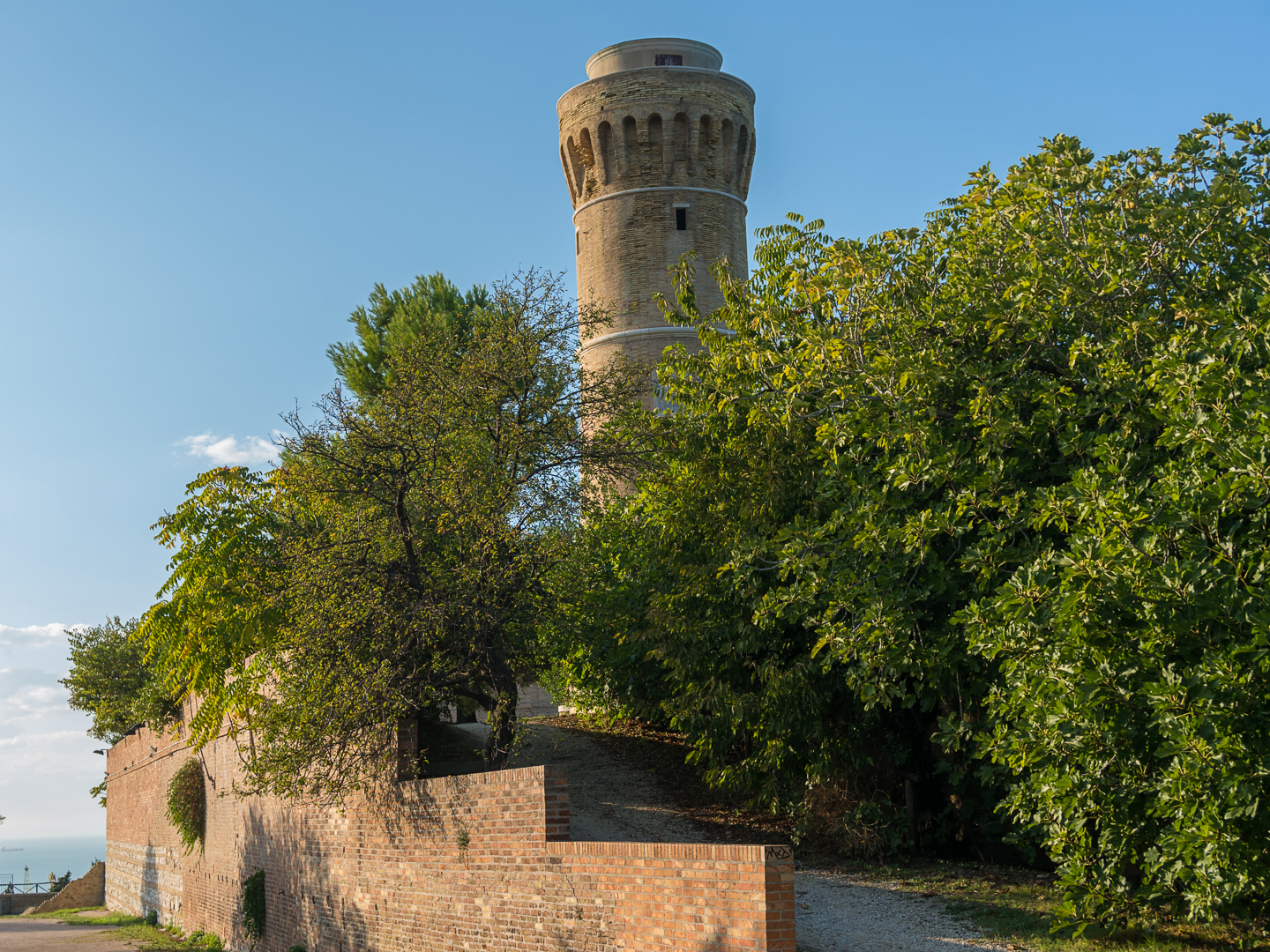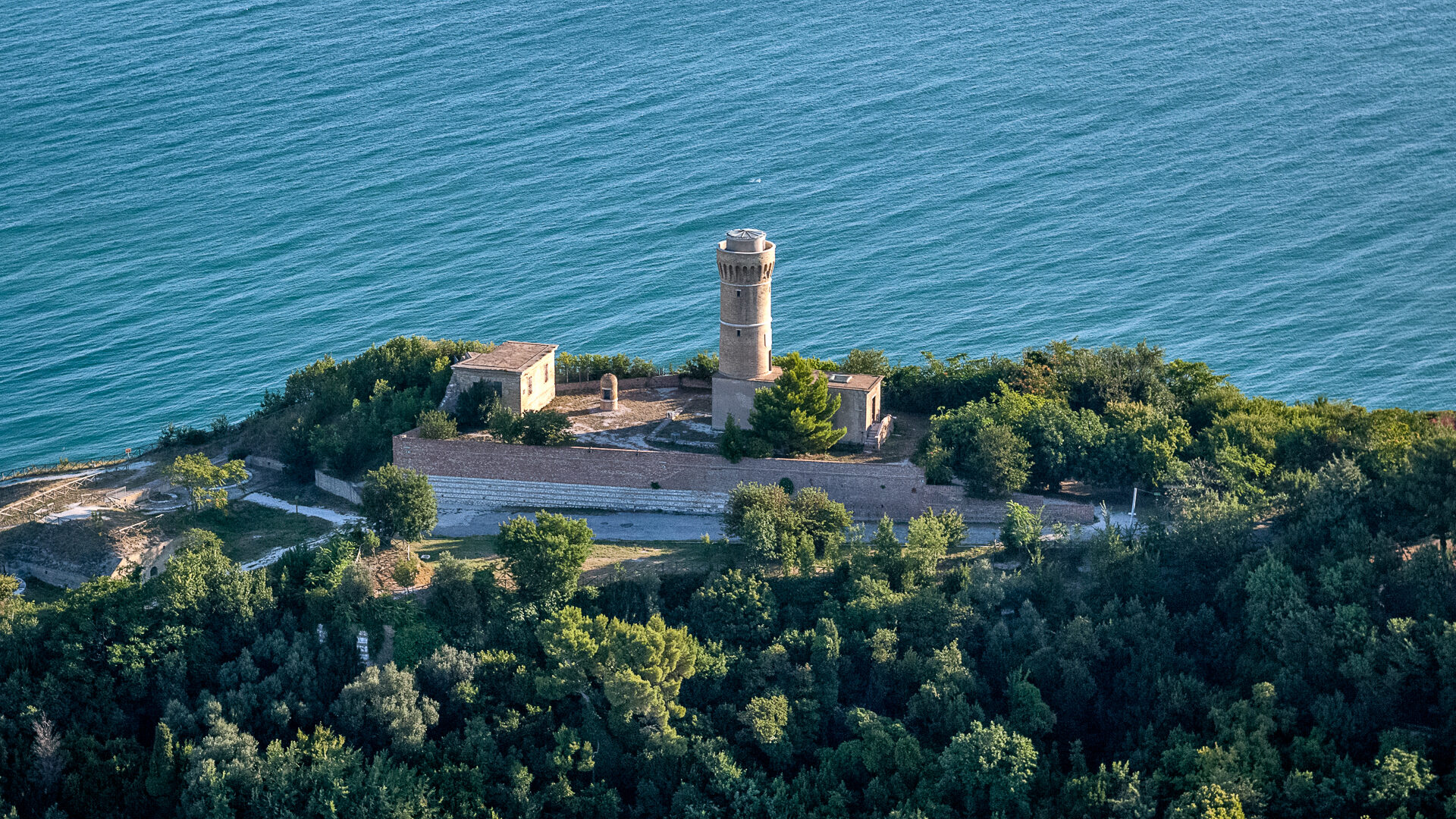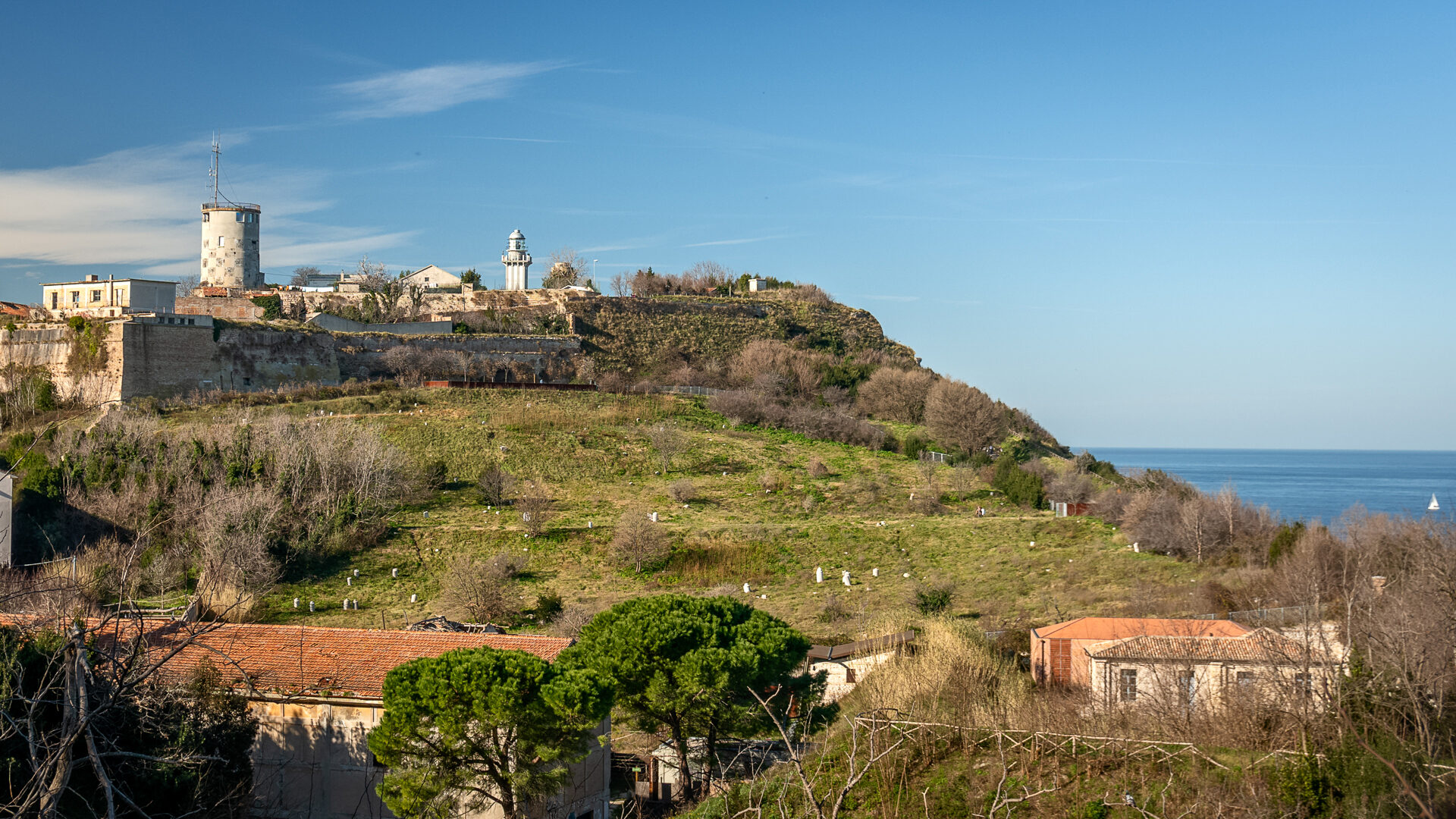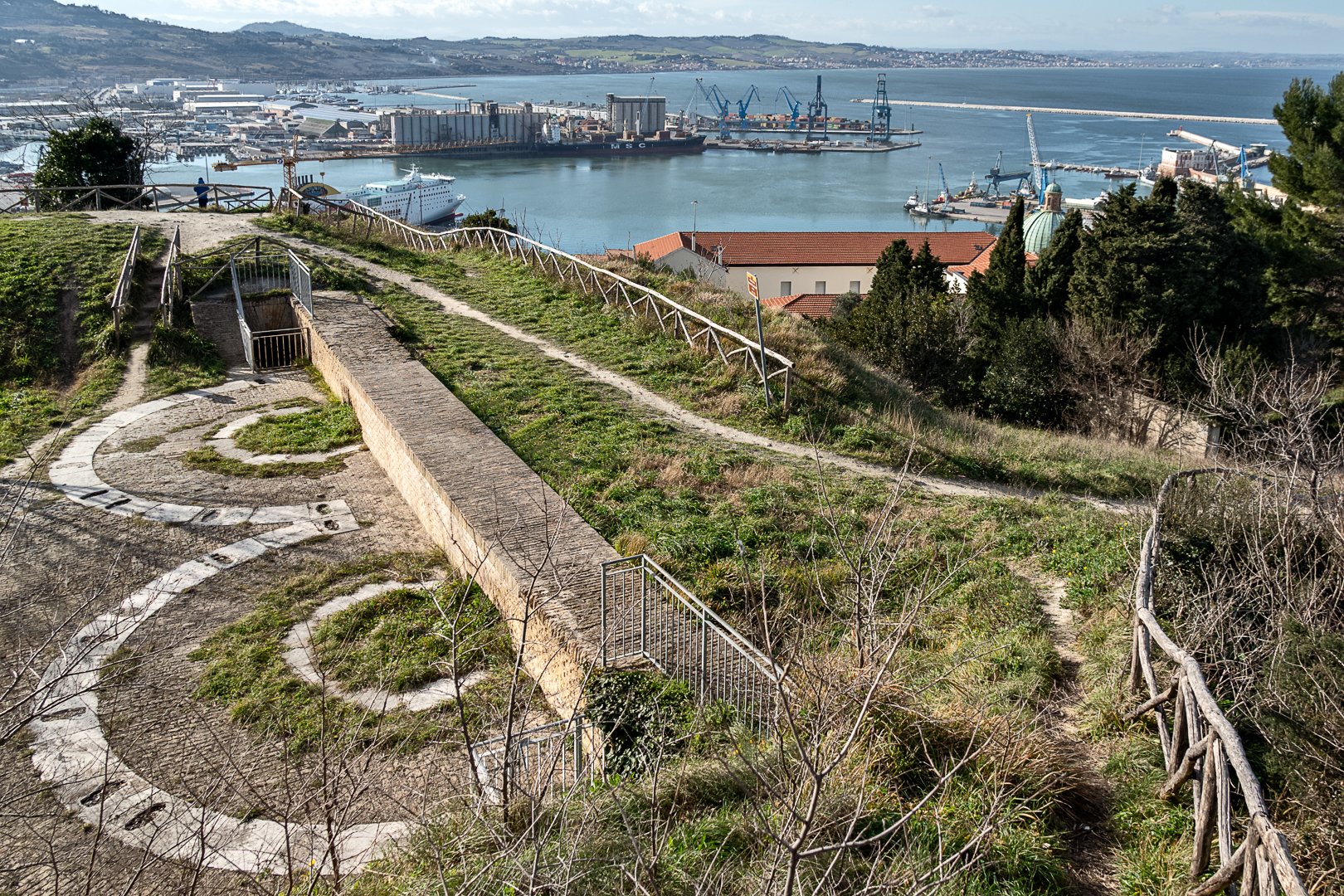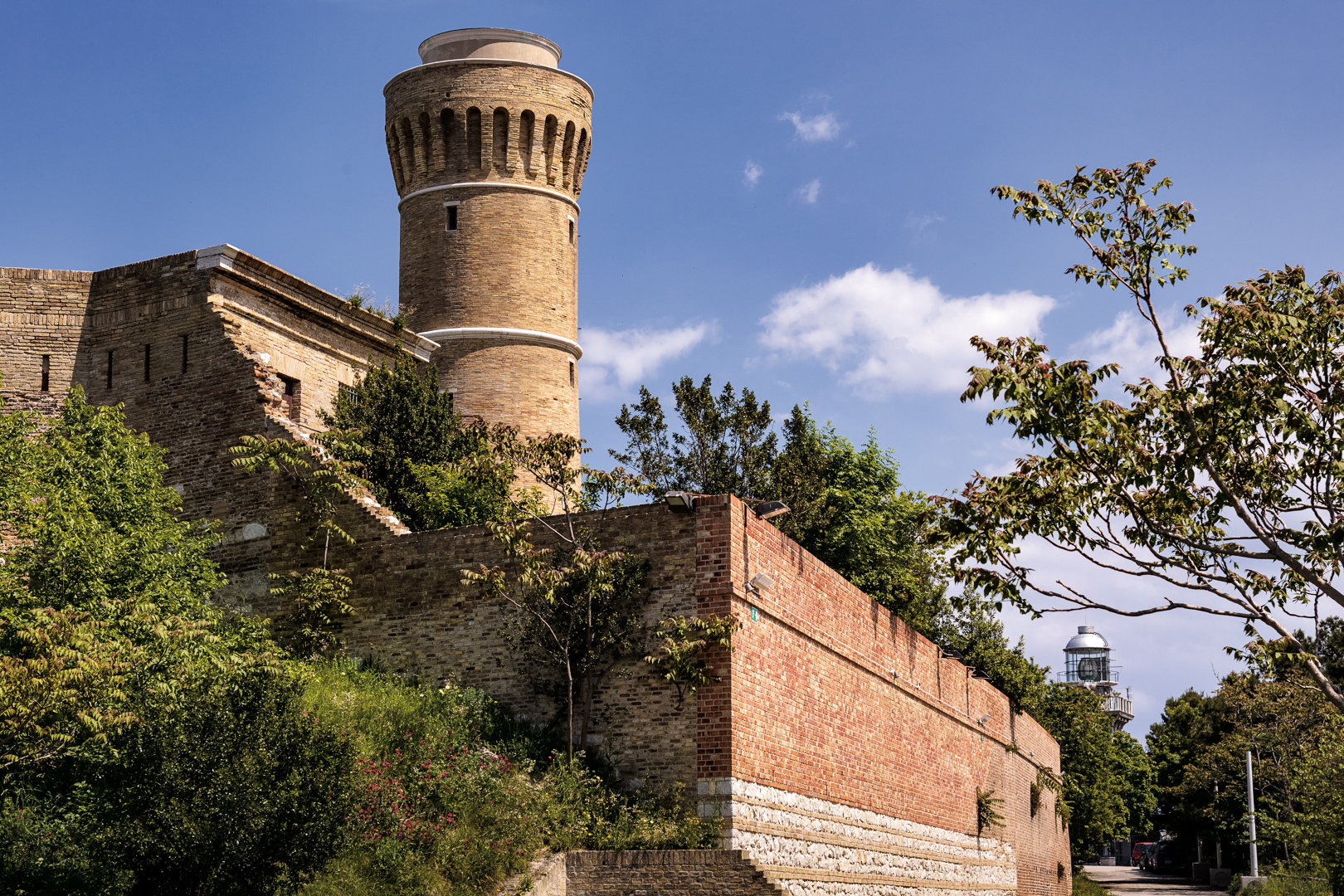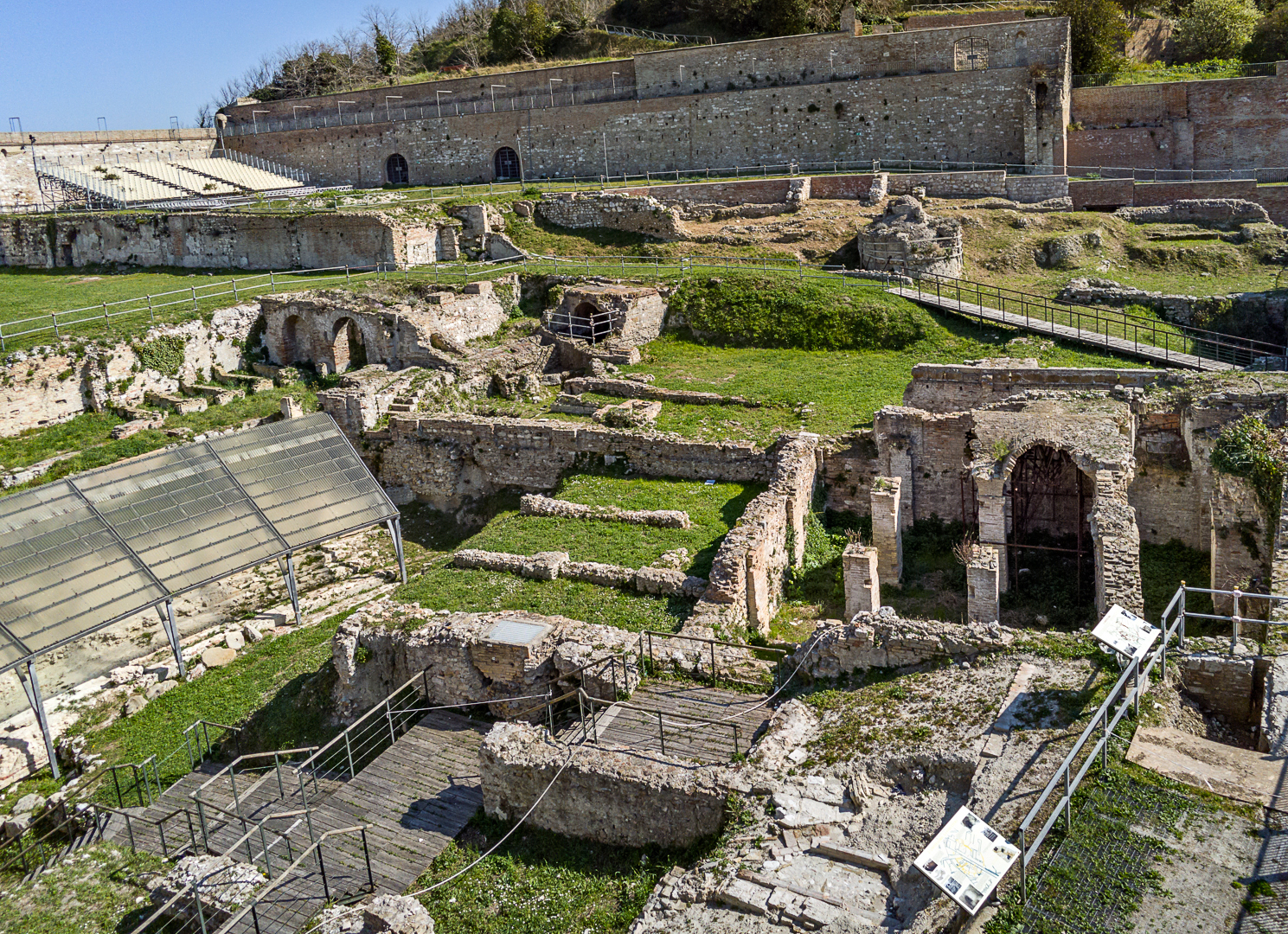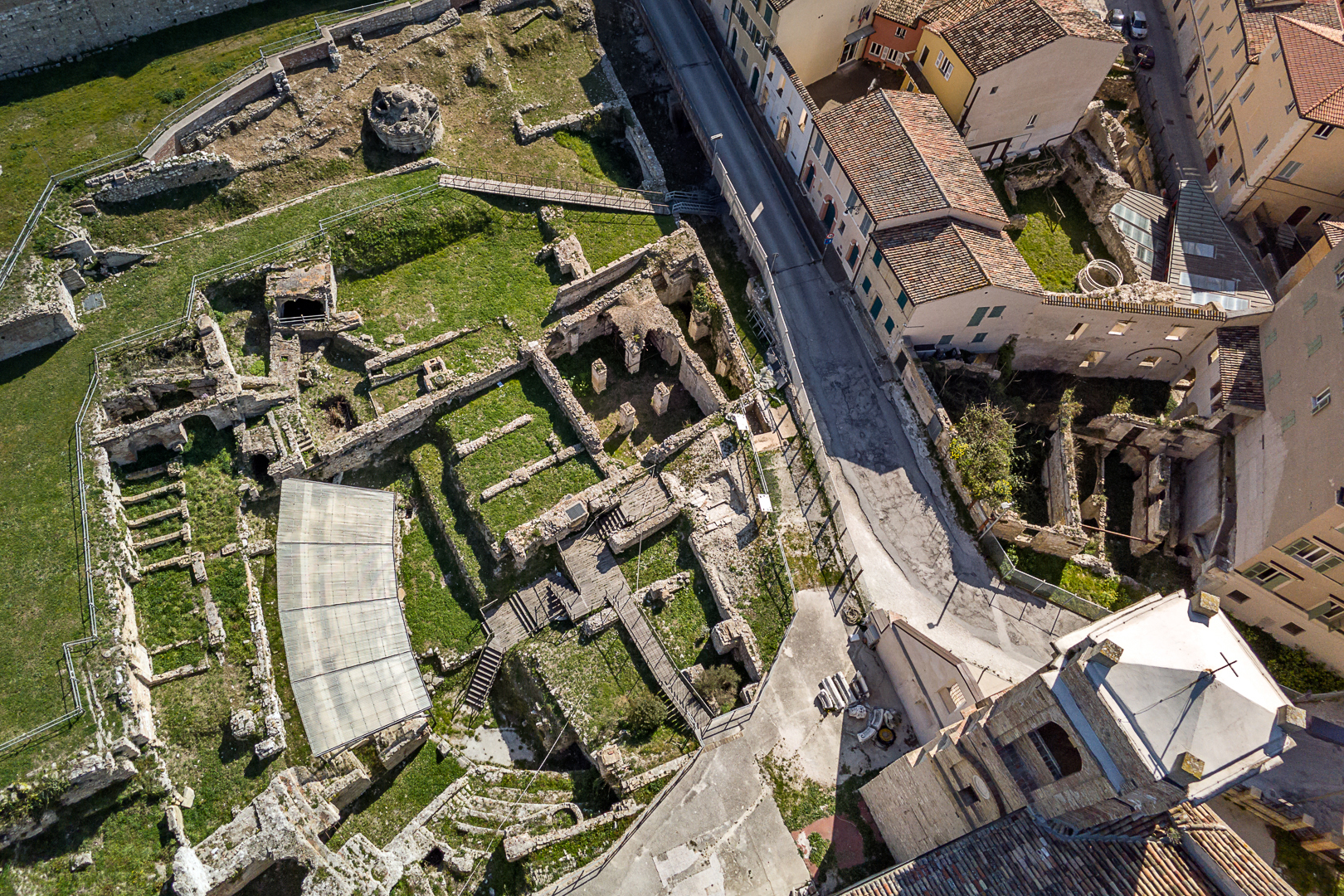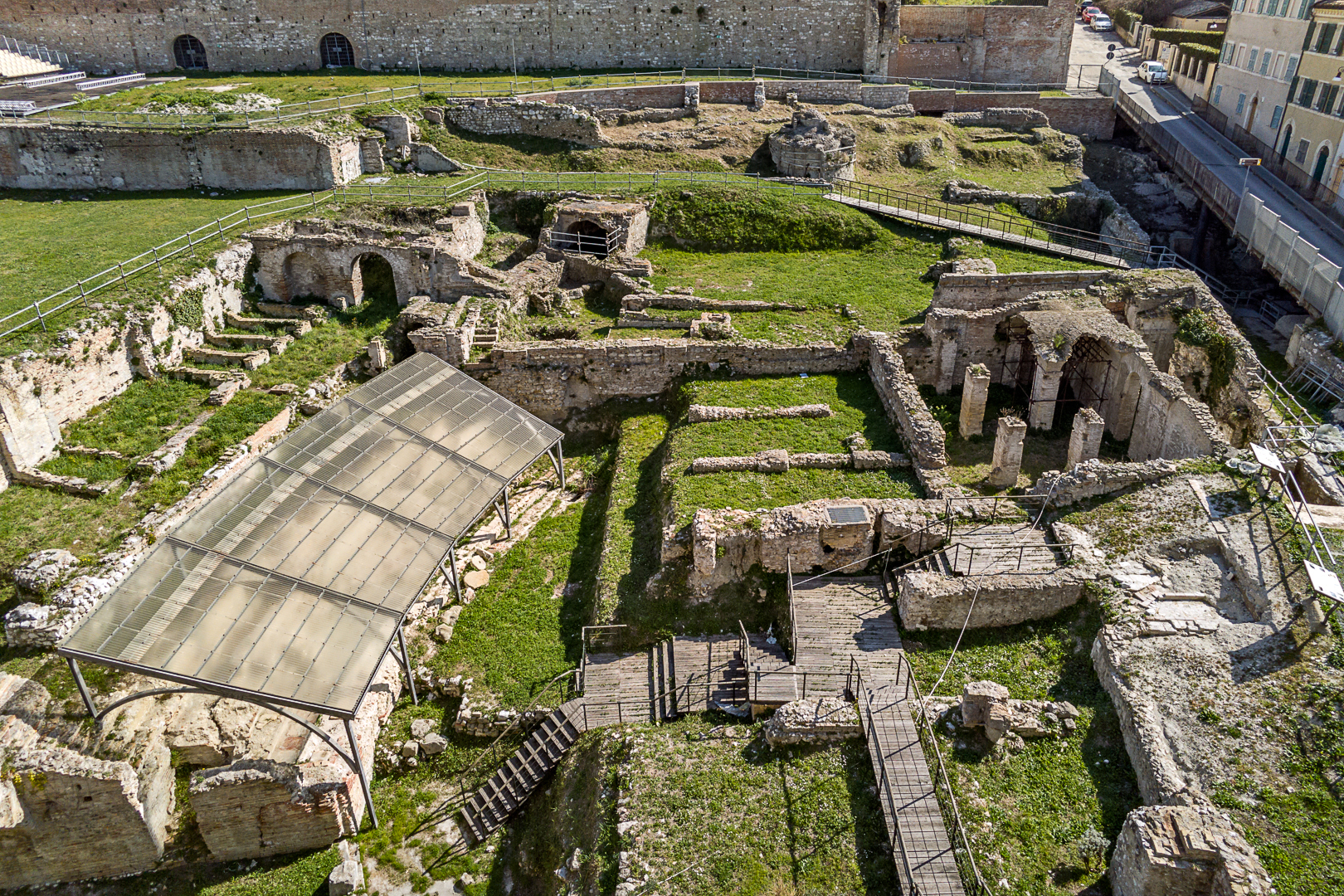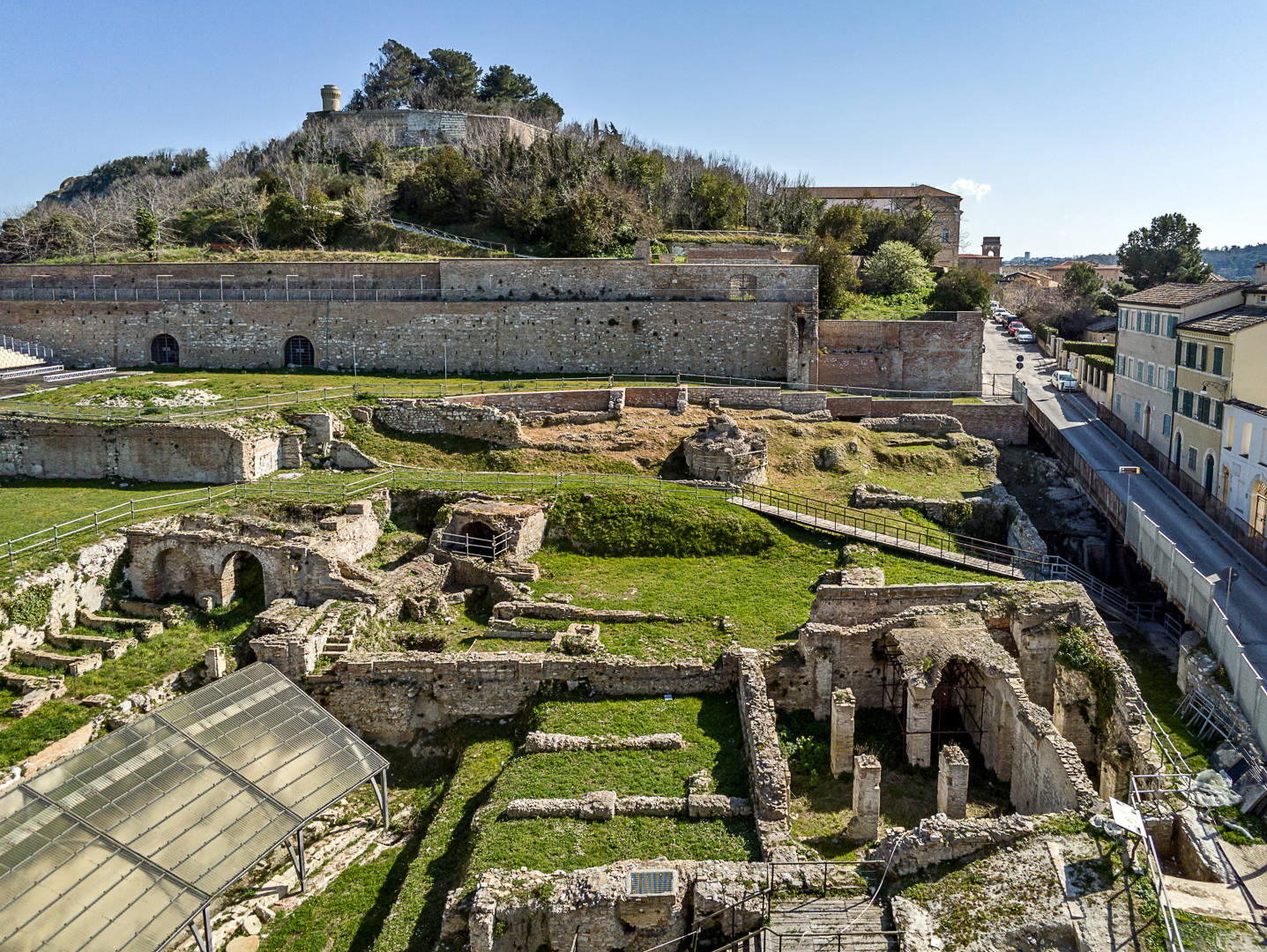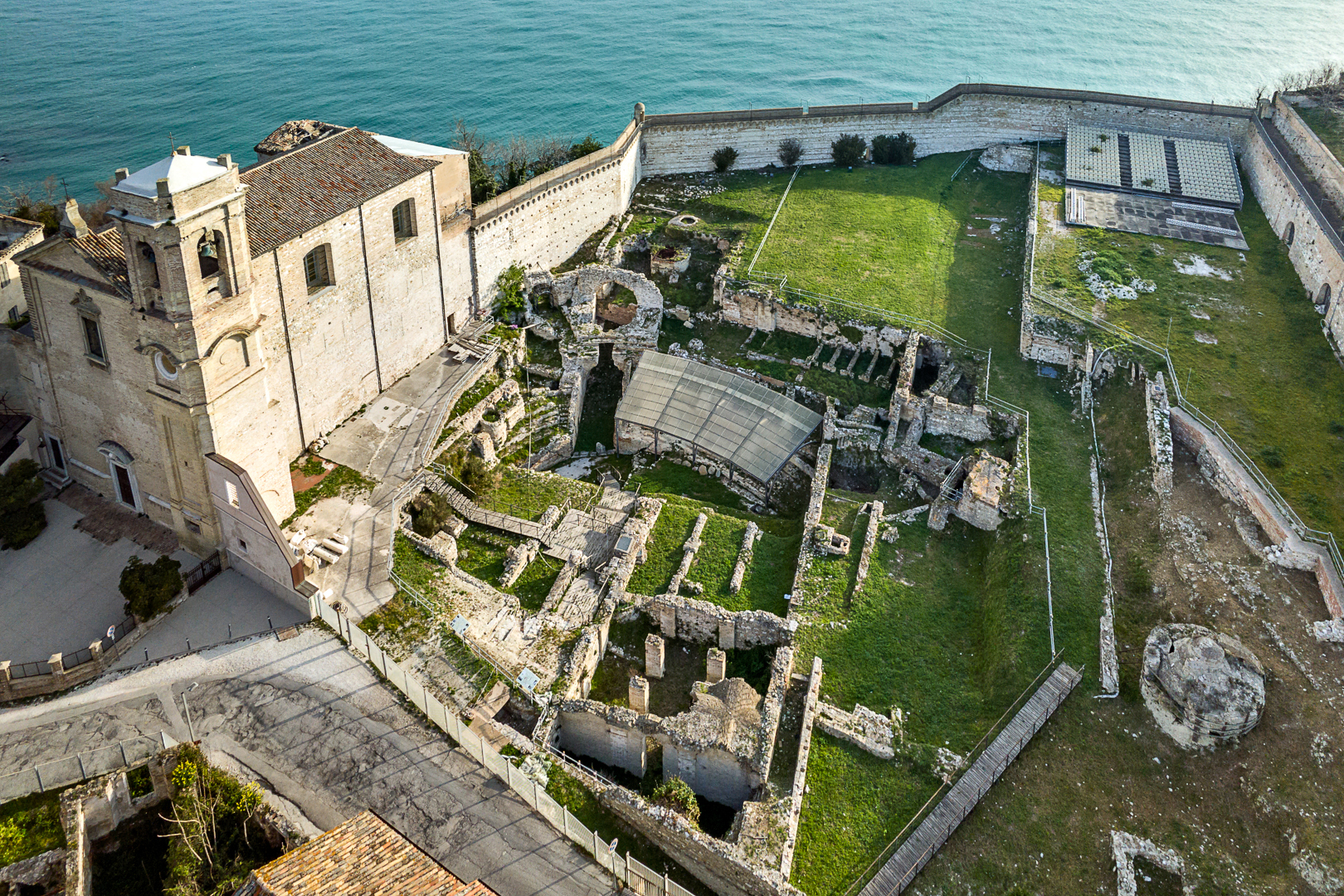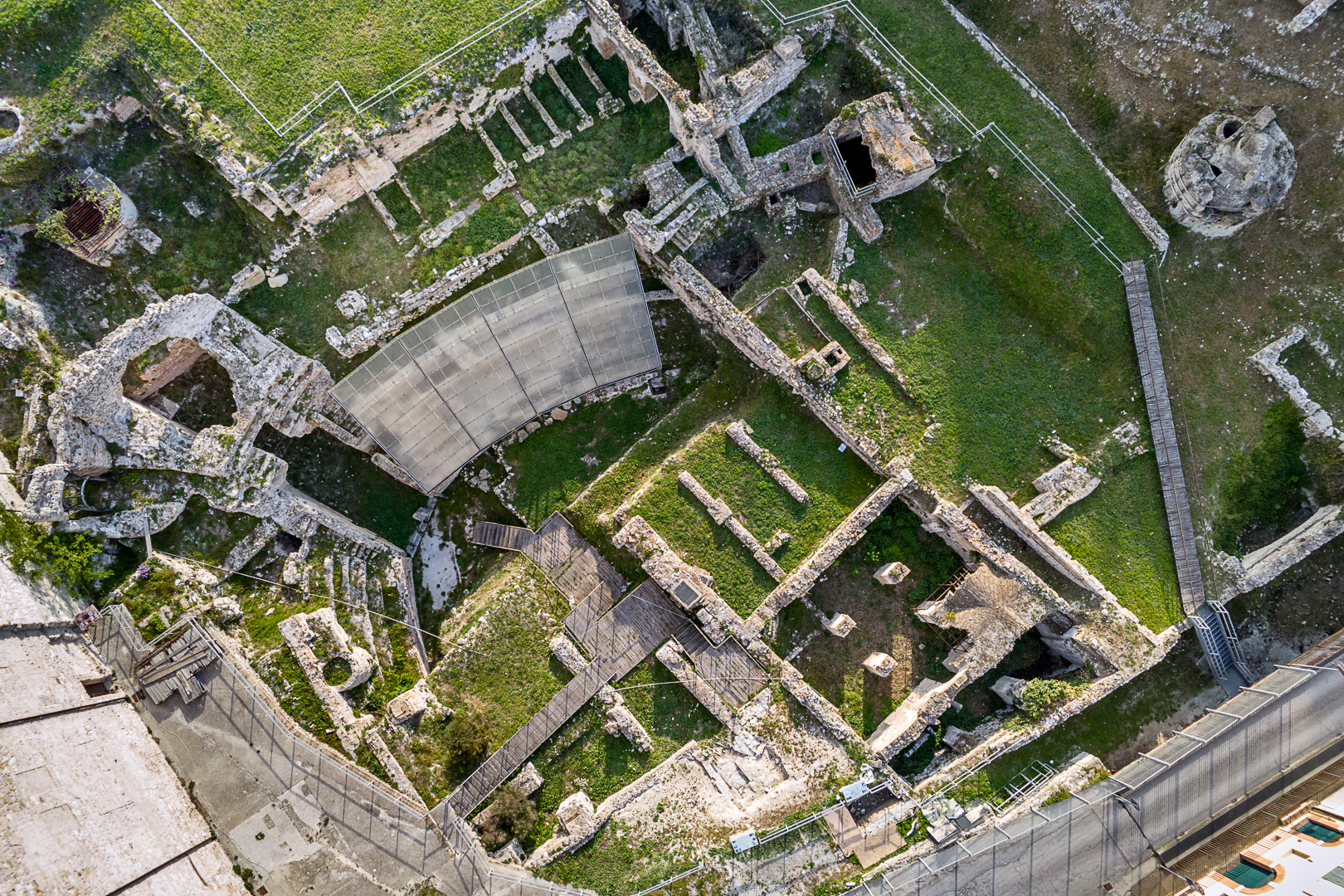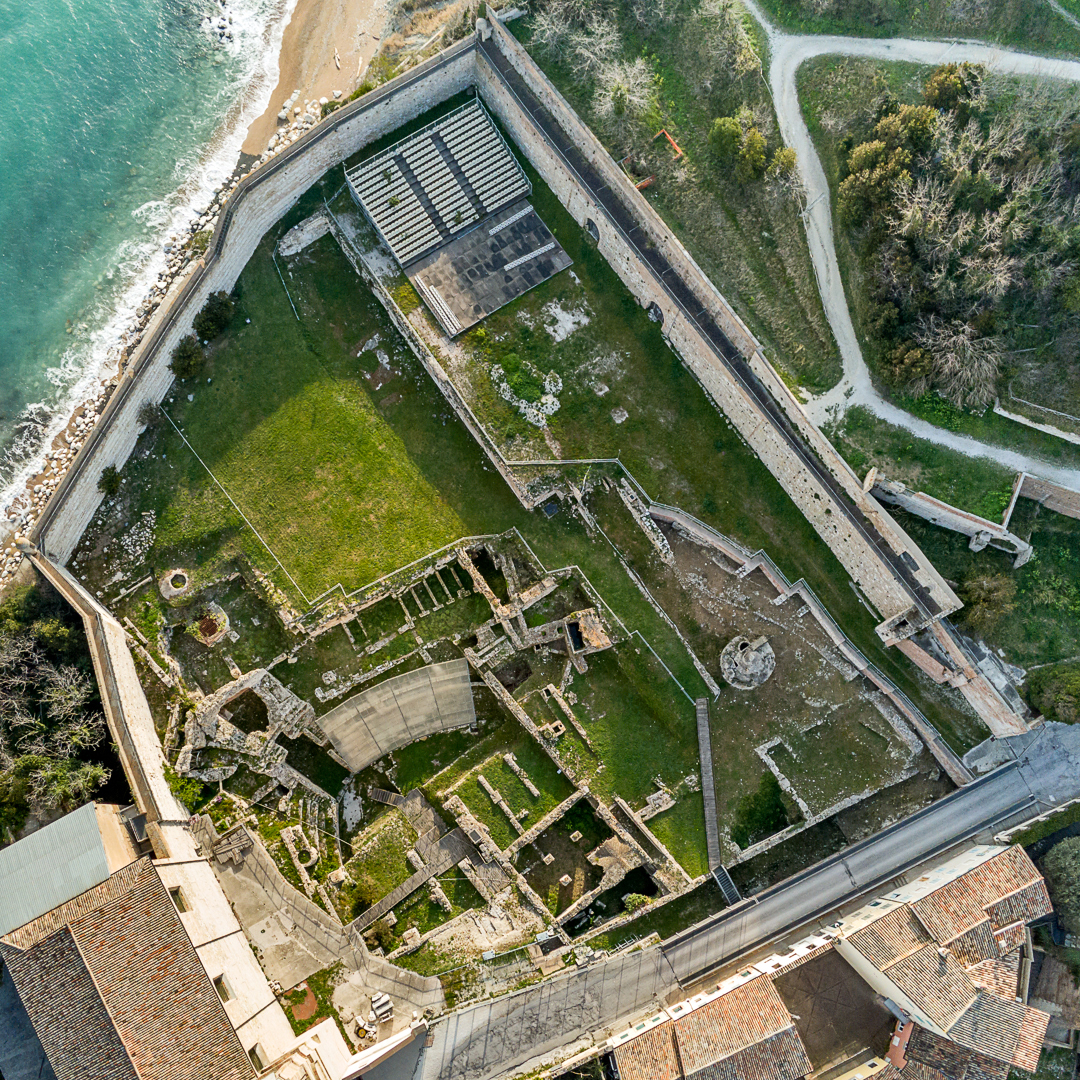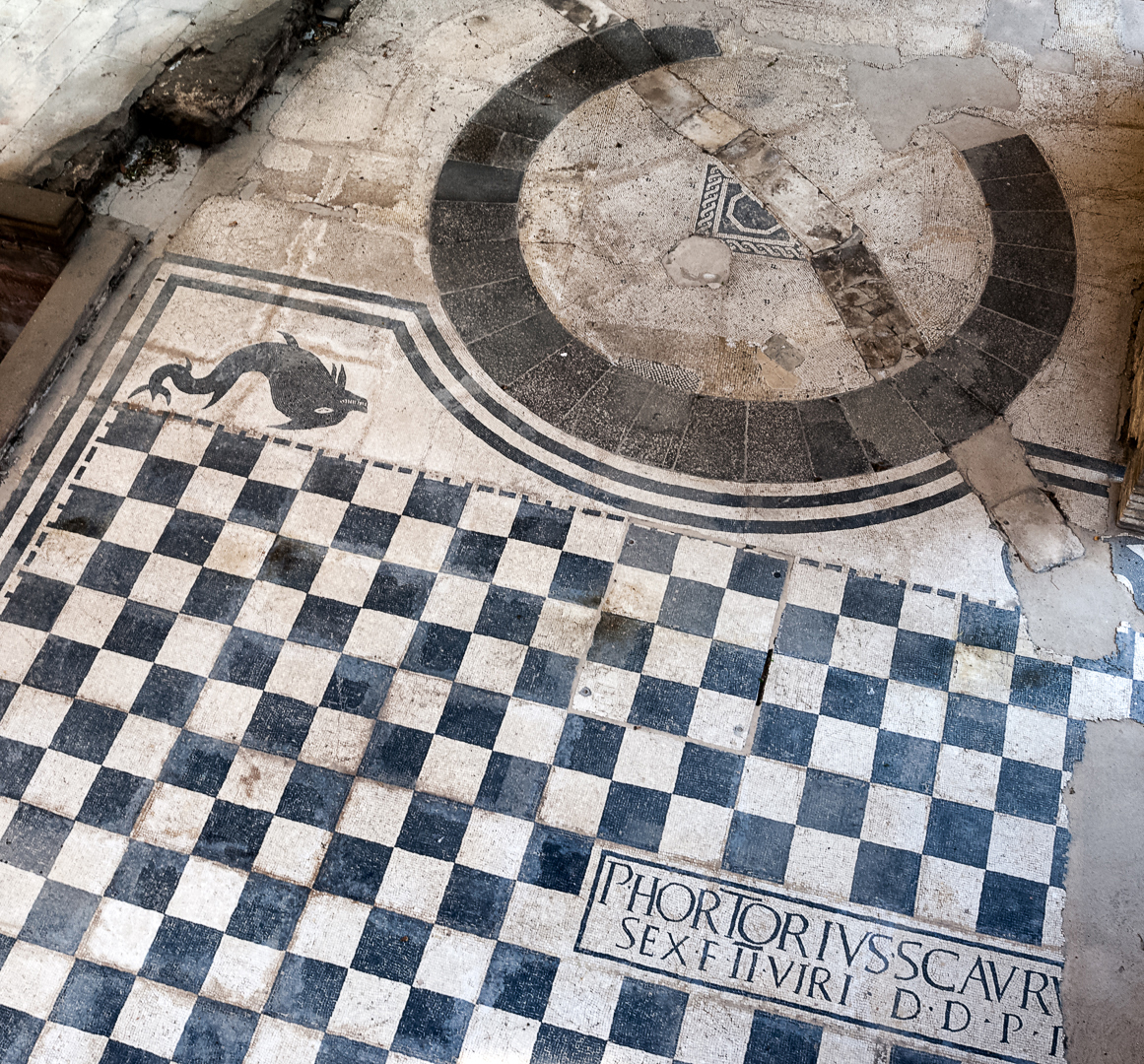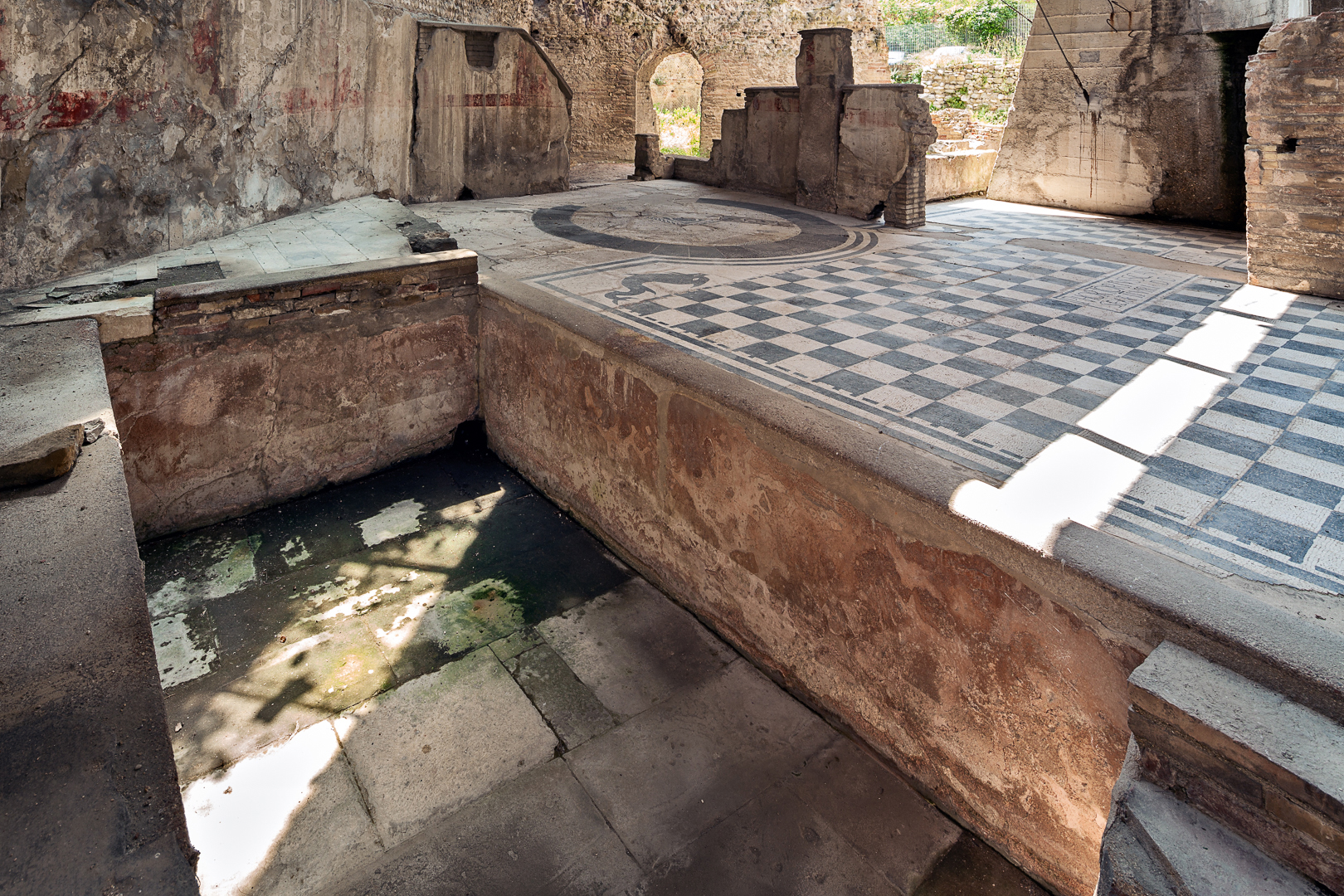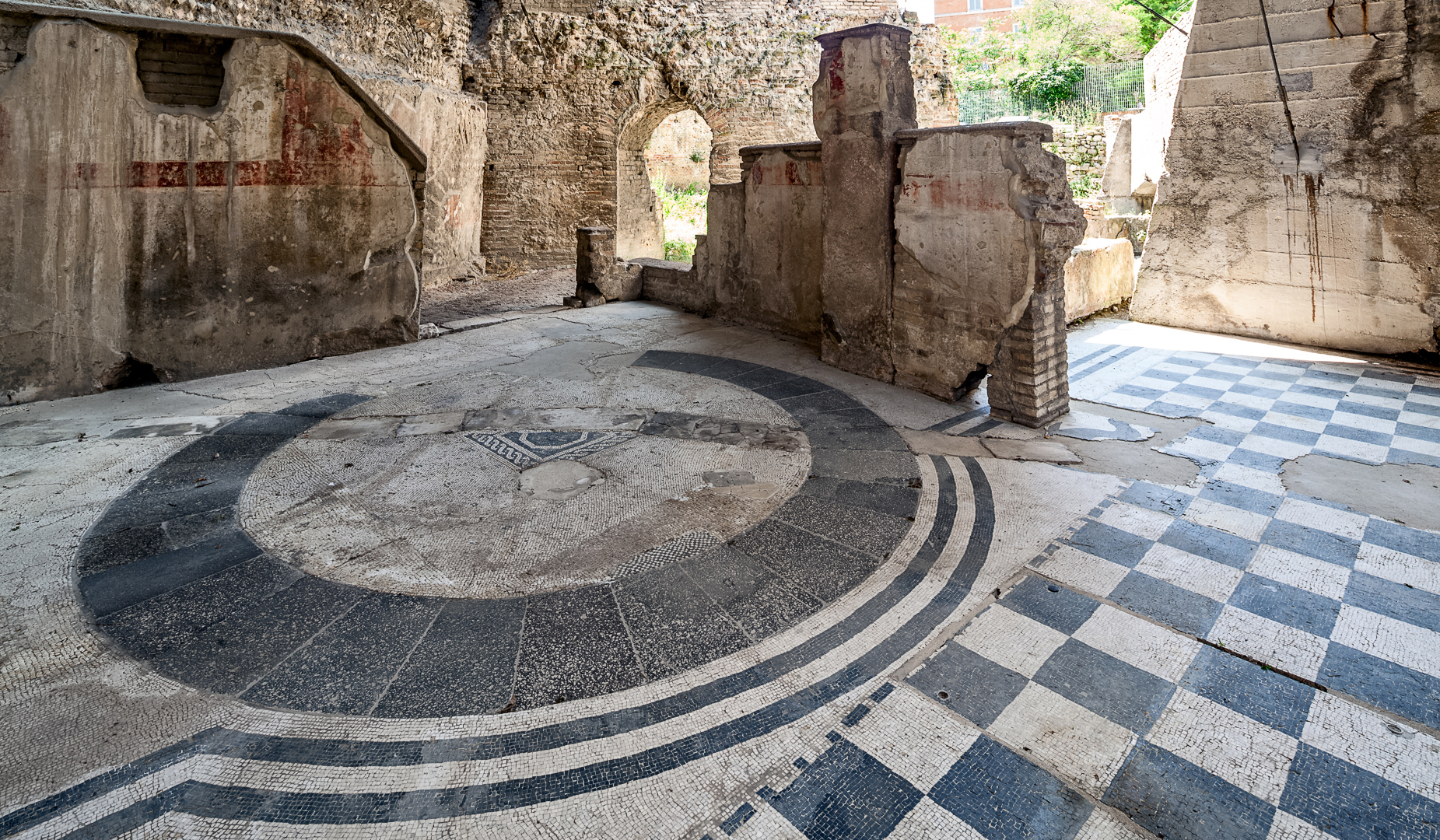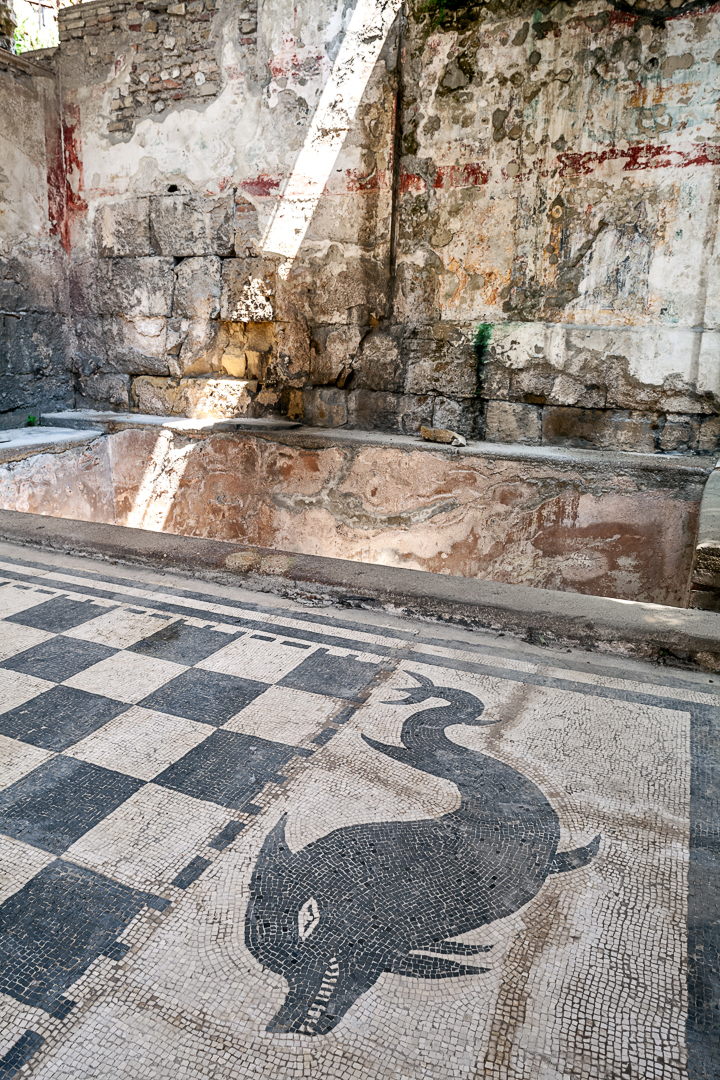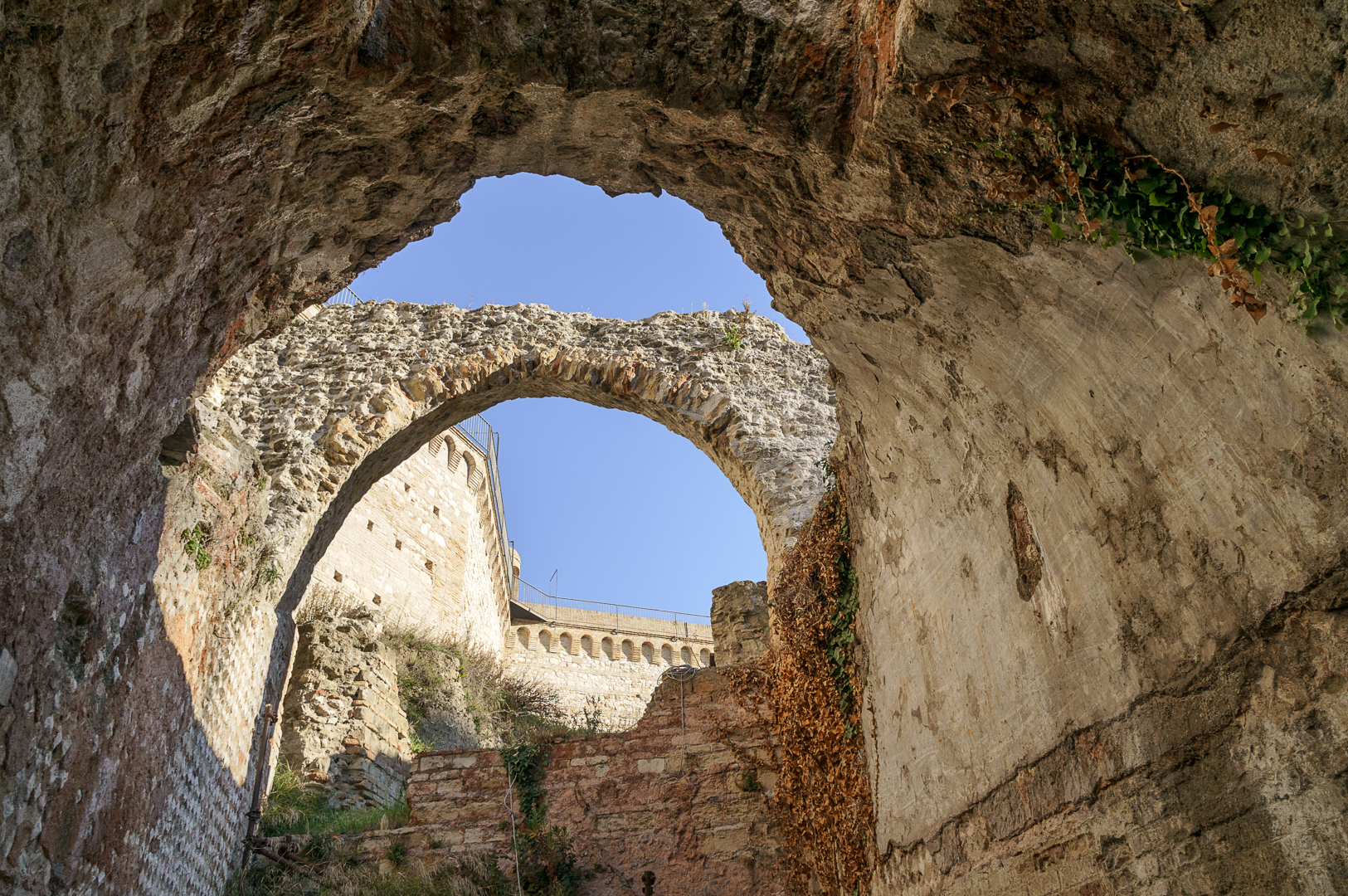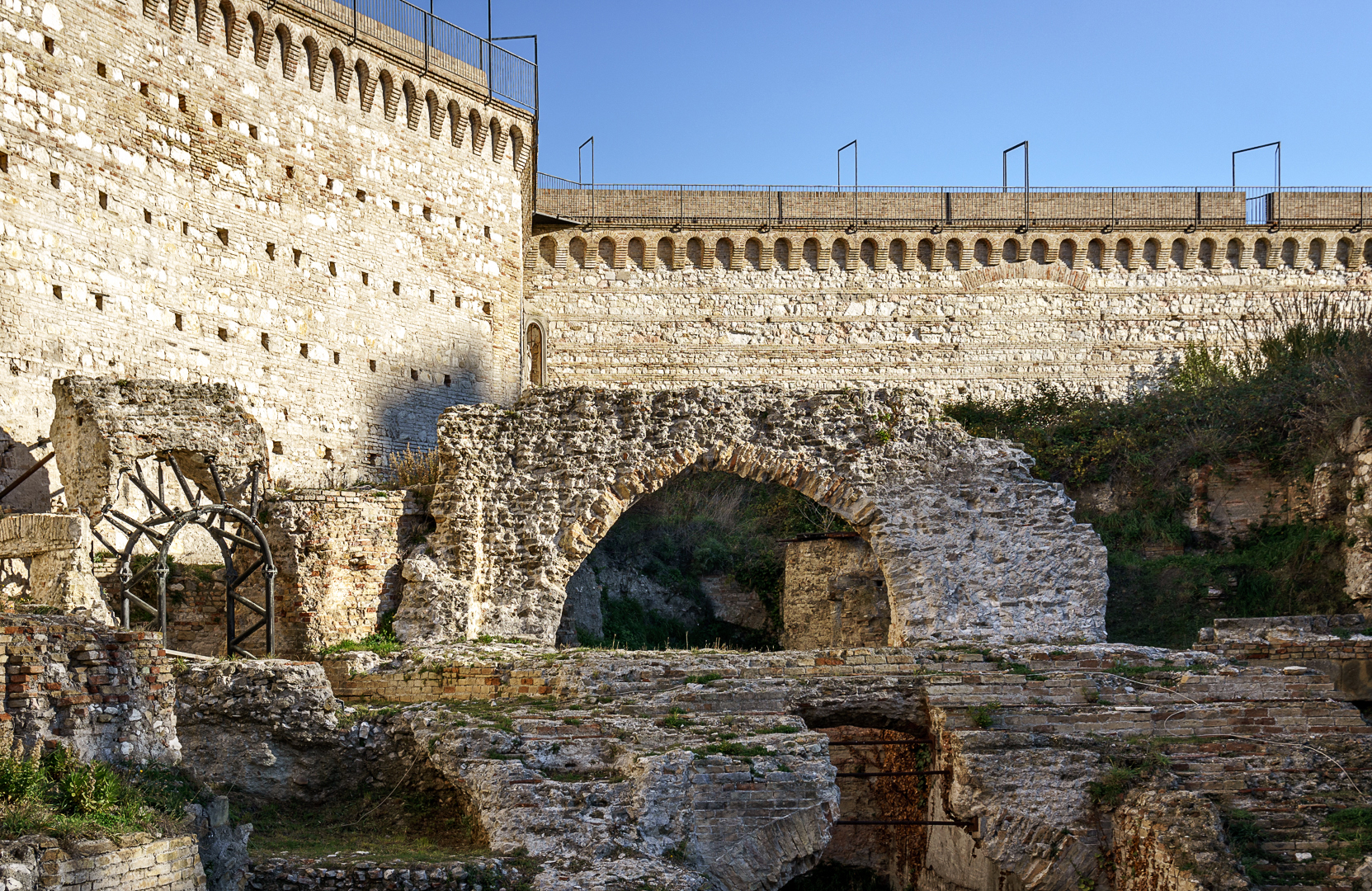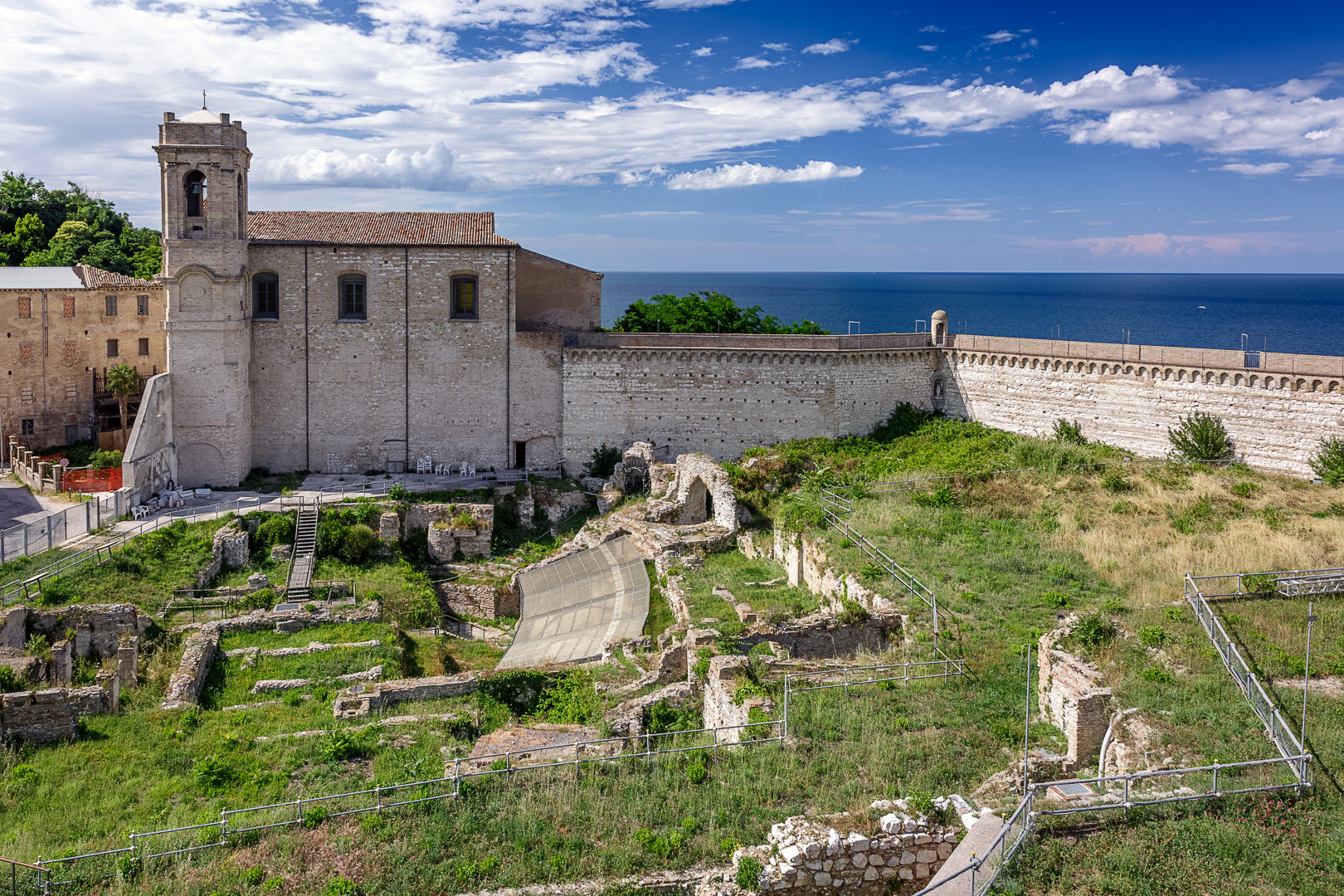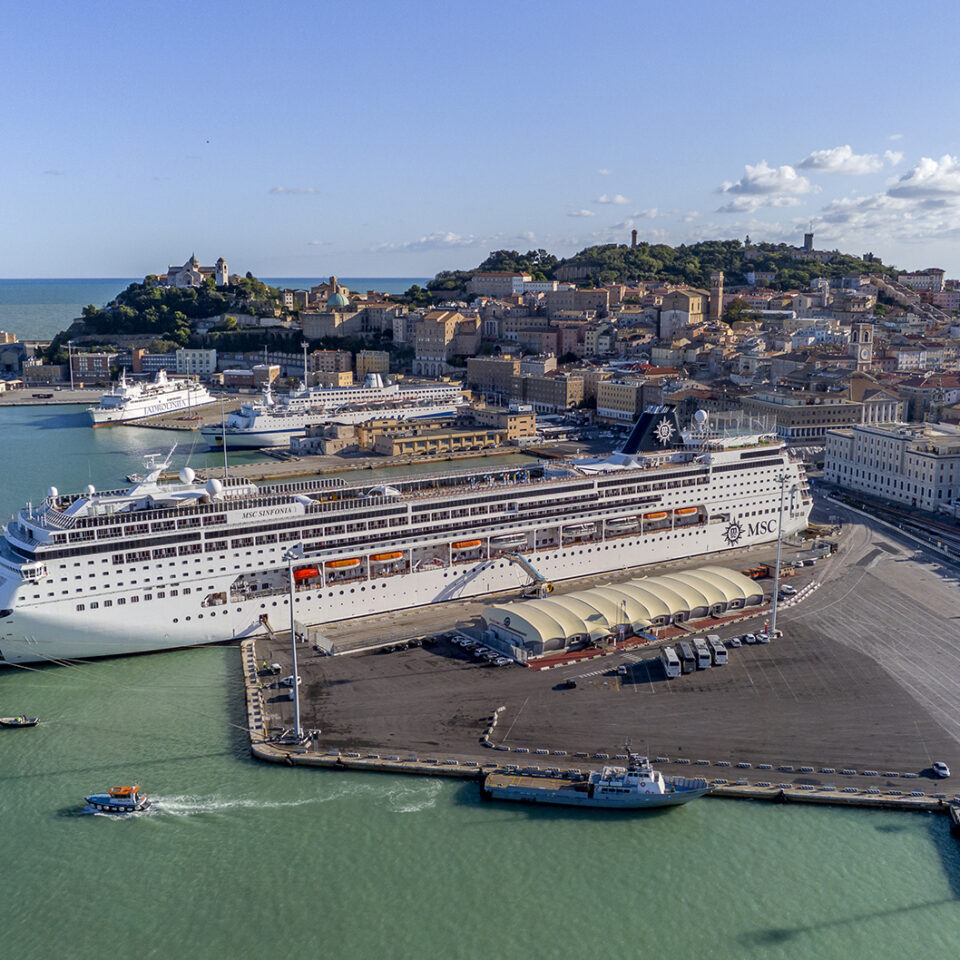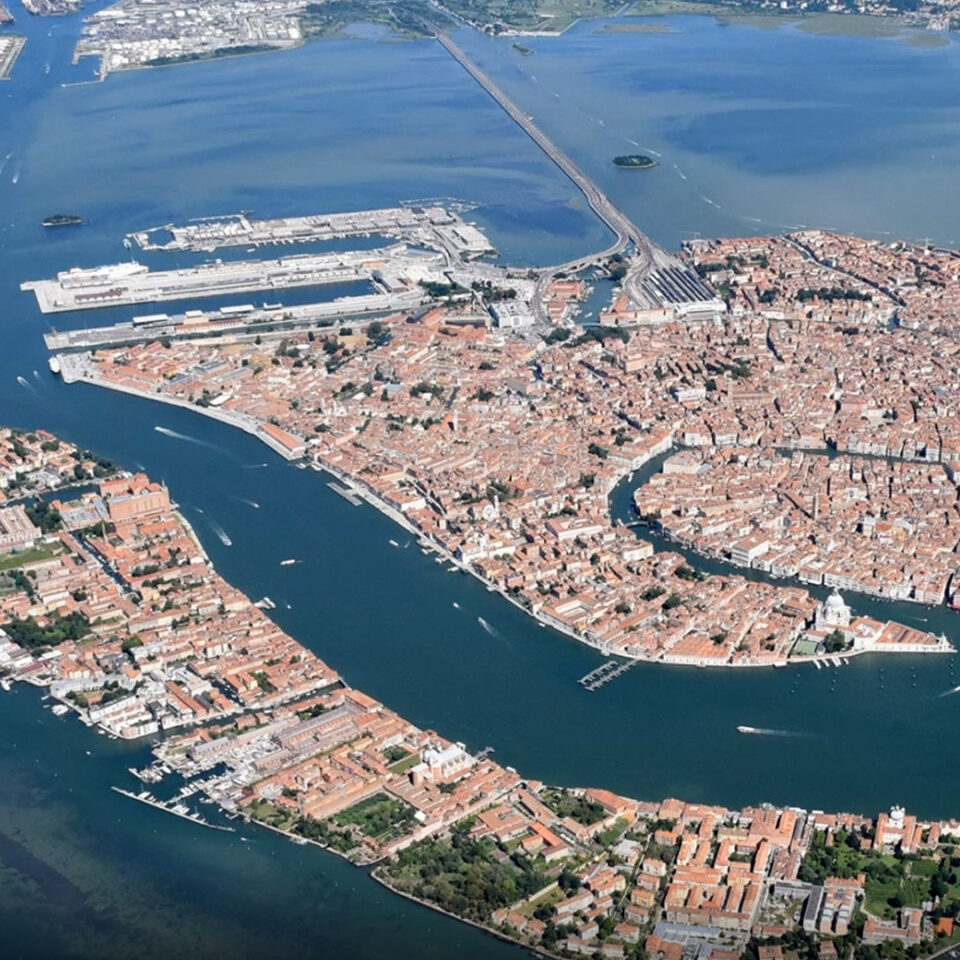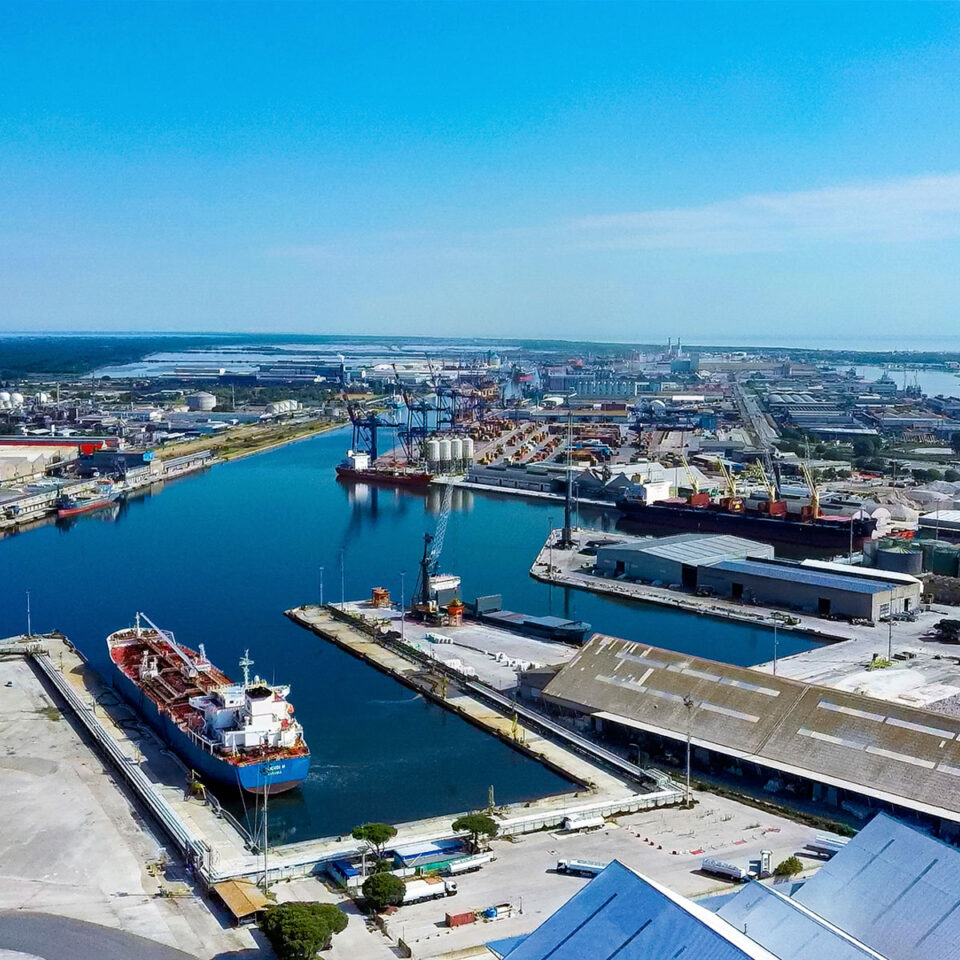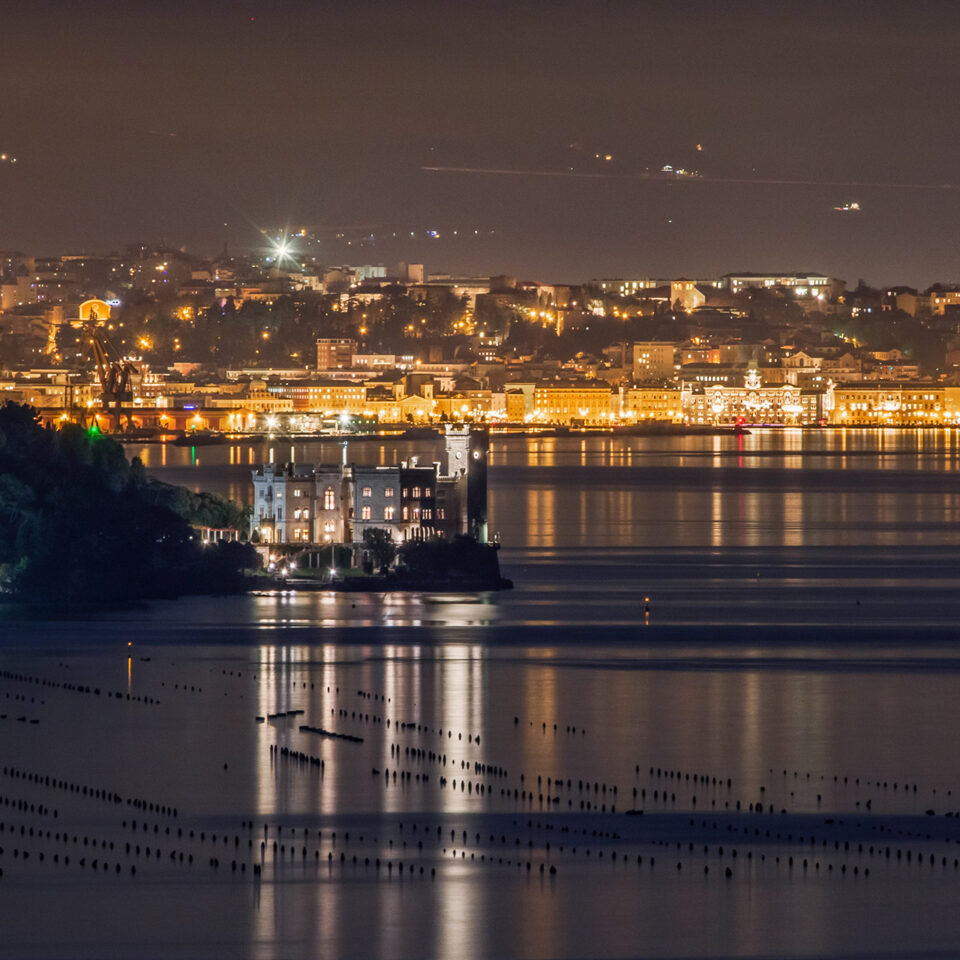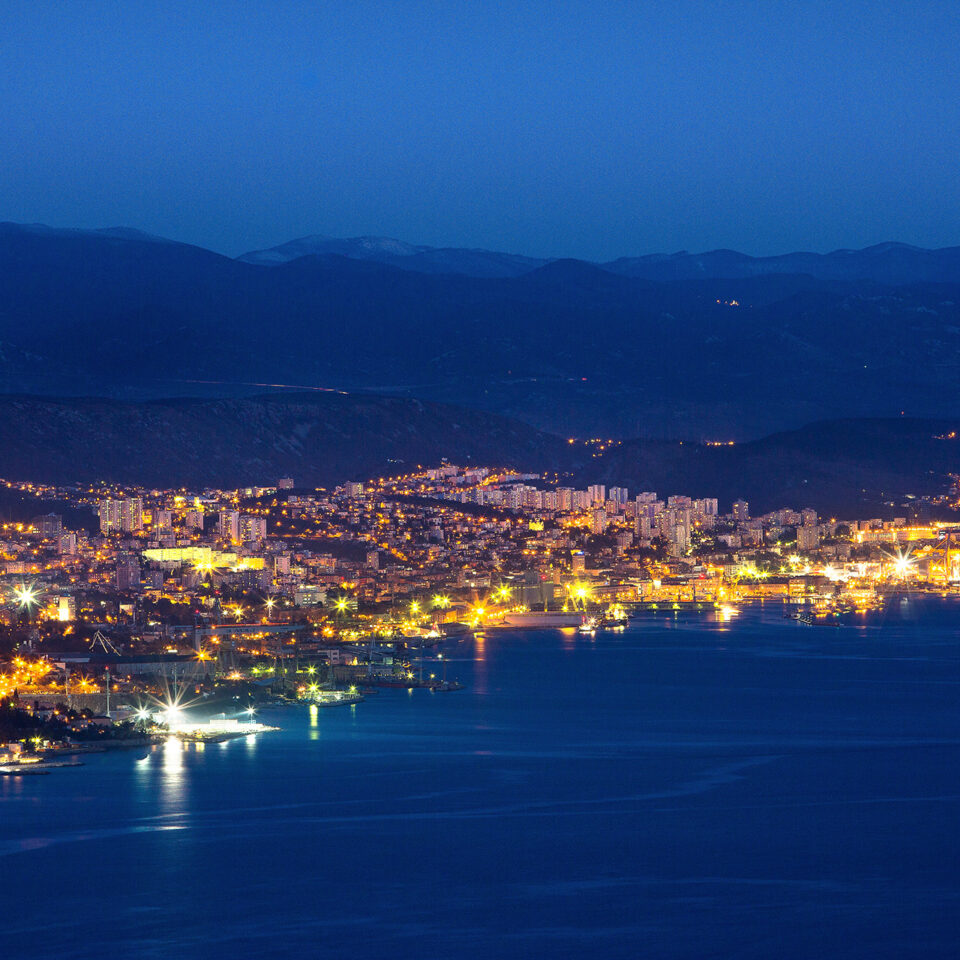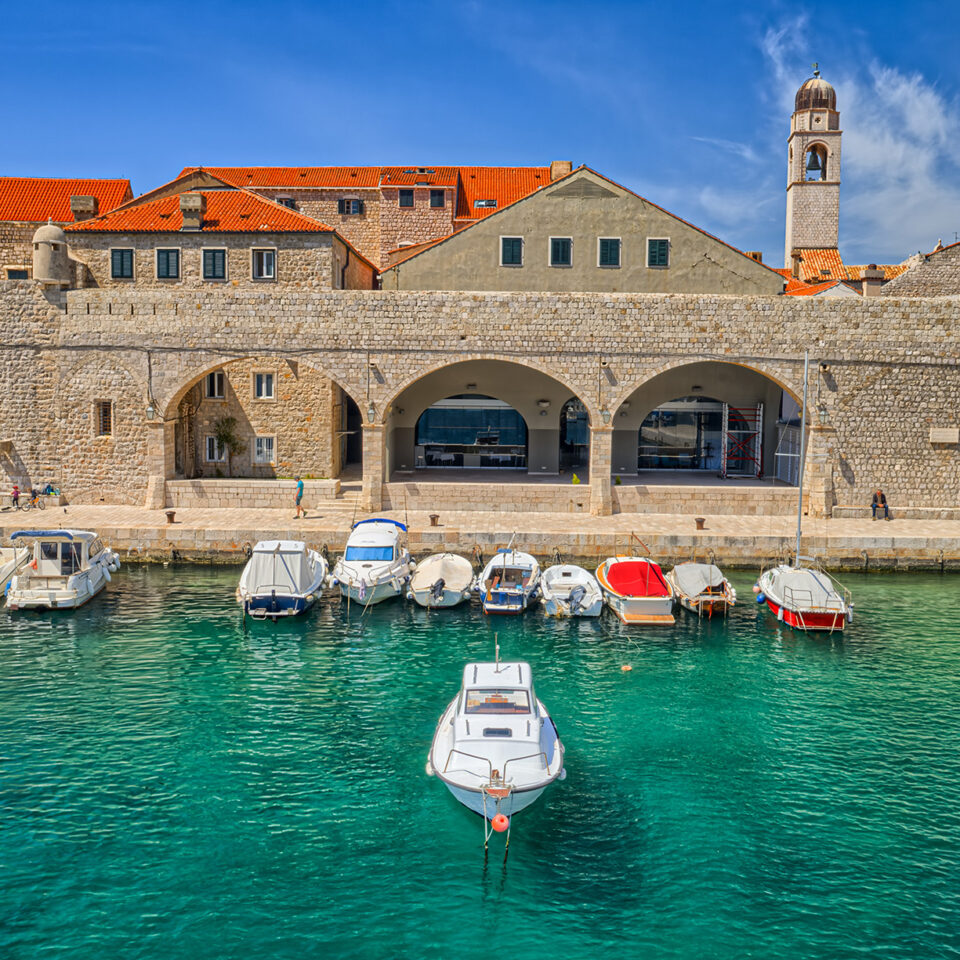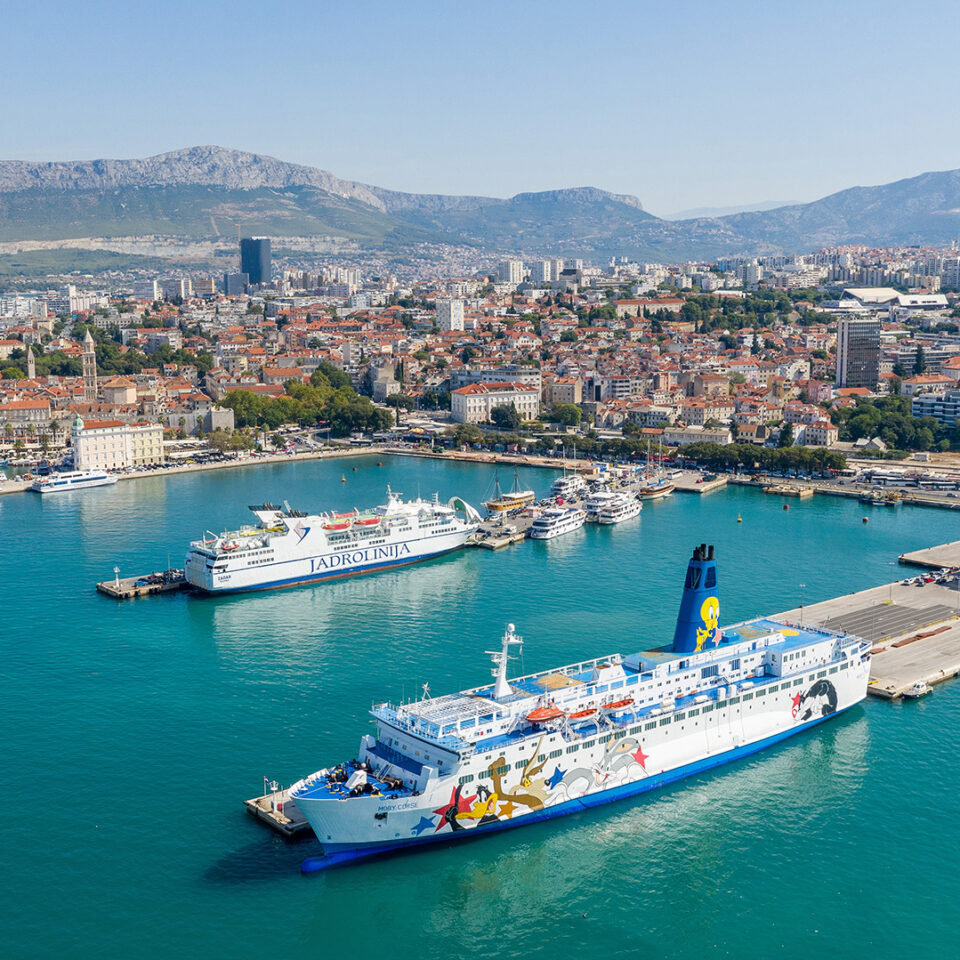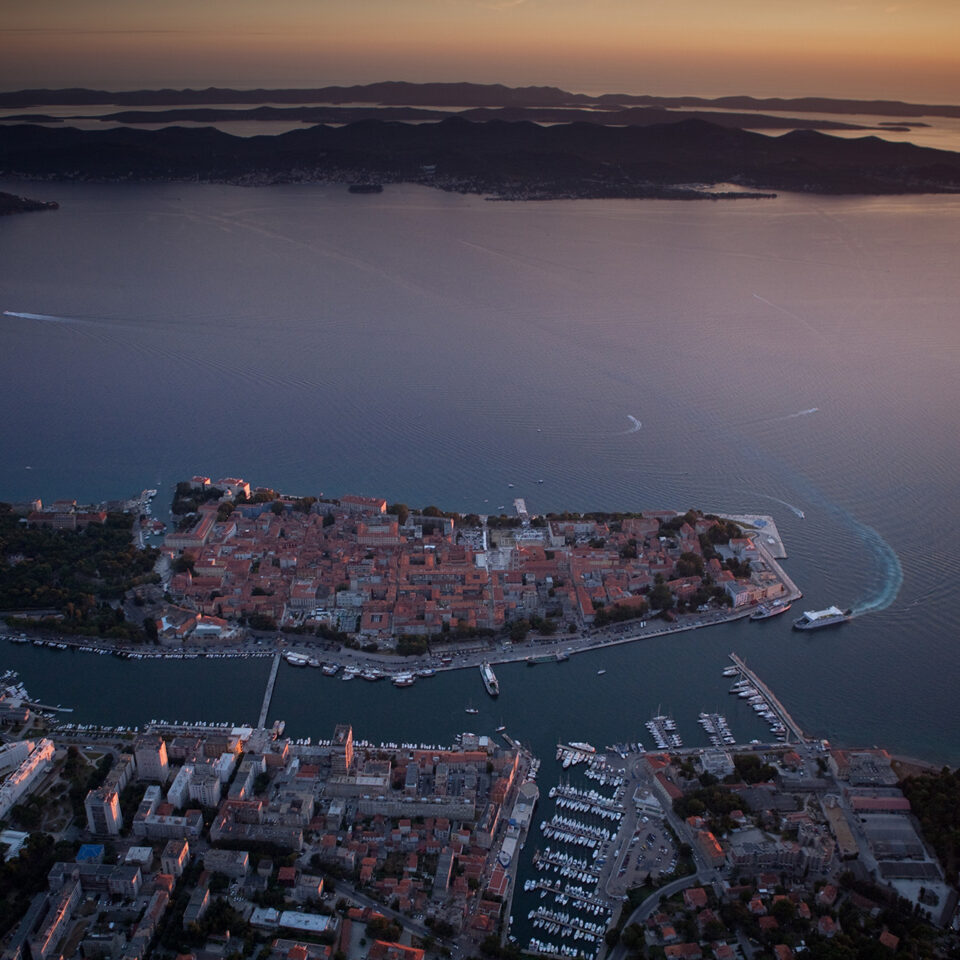


OVERLOOKING THE SEA
A port of places, people, and work; a port of monuments and rituals, faces, stories, and tradition; a port of identities, languages, perspectives, and local memories. Commissioned by the Central Adriatic Port Authority, Gian Luca Favetto (Turin, 1957), Italian poet, journalist, writer, and playwright, offers us an author’s view of the Doric port. He writes for the newspaper Repubblica and is a longstanding voice of Radio Rai. He is the creator of the project Interferenze fra le città e gli uomini. Among his most celebrated works: Se dico radici dico storie, the poem collection Mappamondi e corsari, the audiobook I nomi fanno il mondo, the novel La vita non fa rumore, and the short story Un’estrema solitudine.
Text: Cristiana Colli
THE CARDETO
by Gian Luca Favetto
Walking up from the port, along 1.5 kilometres of narrow streets, past houses crammed in next to one another, you reach a place where the roads go up hill and down, rising and falling, with trails, trees, woods, meadows, and the remains of buildings marking the passage of time. It is a secluded place, a place where different shades of green shift and cluster, hemmed in on one side by a steep cliff overlooking the sea, while on the remaining sides it’s surrounded by houses, roofs, walls, streets. It’s an oasis, the green lung upon which the entire city relies.
Seen from above, tracing the contours outlined on the map, it looks like an open eye – green of course – staring up at the sky. But it is also free to turn its gaze north/north-east, where the cliff is brittle and subject to endless erosion, and then stretch beyond the horizon, as far as the Croatian coastline.
Like all the beautiful things in Ancona, there is no place from which you can clearly observe it. You need to look for it, find your own path leading to it. Possibly, the best way to approach this portion of city enveloped in nature is to study it before hand on the map.
It is one of Ancona’s hearts. Its name is Cardeto, from the plant that once grew here in abundance: the cardoon. It is a park. In fact, it’s something more than a park: it’s a place out of time, away from every worry, far from the hustle and bustle of the city. With fortifications, armouries, arsenals, former barracks, ruins, old monasteries, cemeteries, imposing 16th century strongholds above myriad underground tunnels and a lighthouse, the old lighthouse of Ancona. It extends over 35 hectares, between the peaks of Colle Cappuccini and Monte Cardeto, skirting three of the city’s neighbourhoods.
Vast, welcoming, it is an intimate, secluded spot. And very little known. It isn’t easy to find. It doesn’t show itself right away, making a fuss of itself, you will discover it gradually, as you stroll through it one step at a time after entering through one of its five gates.
Here you will find the Jewish cemetery, the Campo degli Ebrei as it is called, with white memorial stones jutting out of the grass. It is one of the largest in Europe, and it is endowed with great charm thanks to its position: facing East, as required by tradition, and with a view of the sea. It was established between the end of the 14th century and the beginning of the 15th. The first official document, dating back to 1428, was a paper in which the Senate of the Republic of Ancona designated a piece of land outside the city walls for a cemetery to be built. The graves bear dates ranging from 1590 to 1863.
Depending on the season, and as long as the cutting of the grass and overenthusiastic pruning haven’t wreaked too much havoc, you may be able to enjoy the flowering of daffodils, orchids, crocuses, and anemones.
The inhabitants of the city quite love this place, but they are not very well acquainted with it. Deep down, they are still waiting for the Cardeto to awaken, they are torn between the charm of this intact, wild, romantic spot, and the idea that it might be brought back to life by embellishments intended to develop tourism and draw a greater public. And yet, there is no better place than this desolation full of affection to enjoy the nostalgic hues of the sunset sky, creating an oasis unto itself.
THE ROMAN AMPHITHEATRE
A discrete, secluded spot. Very evocative. It just sits up there, outside of time. A car goes by only every once in a while. It is a place of memories struggling constantly with slovenly forgetfulness so as not to vanish. It was once the core of the community, a stage that nurtured the soul, and to this day it is a spiritual place. A place that is also part of the city’s foundations. Part of its ancient past. A past perfect, if it were a verb tense. And if it were a time of the day, it would be the hour of vespers, when the daylight declines.
The amphitheatre is the custodian of the community’s Roman heart. It stands about 50 metres above sea level, in the cleft between Colle Guasco and Colle dei Cappuccini. The way it takes advantage of the natural conformation of the land is outstanding. Ancona is one of the few cities, possibly the only one, where the Roman amphitheatre is on the highest part of town, on that finger-shaped promontory that extends into the sea, shielding the port.
It is a place of memory, where memories speak in the present tense. You can still make out how imposing it was in its time. Important events took place here: this is where the gladiators performed. With its twenty terraces, it could hold up to ten thousand people. Later on it was used as a defensive stronghold for the city. It was also home to a monastery. In time it was surrounded by houses. Then a prison was built in the area. Above all, it is a place for the imagination, powerfully evocative.
The ancients built cities to be seen. This amphitheatre, instead, is a piece of the city you can make out only when you’re inside it, walking through it. Built at the end of the first century BC, at the time of Augustus, the first Roman Emperor, and finally abandoned in the sixth century AD, when the Goths and Lombards had overrun Italy, it wasn’t rediscovered until the early 1800s. It took another hundred years or more for it to be excavated and brought back to light. The first dig took place in the 1930s, when the expansions ordered by Trajan were found. Excavation works resumed in 1972, after the earthquake, but they were never completed. Ancona’s Roman amphitheatre is to this day in abeyance, only partially revealed, and it is in part to this that is owes its charm, to the traces reminding us of its past magnitude: 93 by 74 metres, with an arena of 52 by 35.
Its charm is also derived from the surrounding buildings: a cluster of edifices from different periods, a jumble of styles and functions, and even an elevated road skirting its perimeter. This all makes for a varied and complex environment, a frame that sets off the stones, the terraces, the cavea, and the entrances it encloses, not to mention the buttresses, recesses, arches, and mosaic floors.
From the walkway built along the reinforcement wall of the old prison, you feel like you are perched above a void. And you will be able to experience another of Ancona’s unique features: visit the city where the sun rises and sets in the sea.

